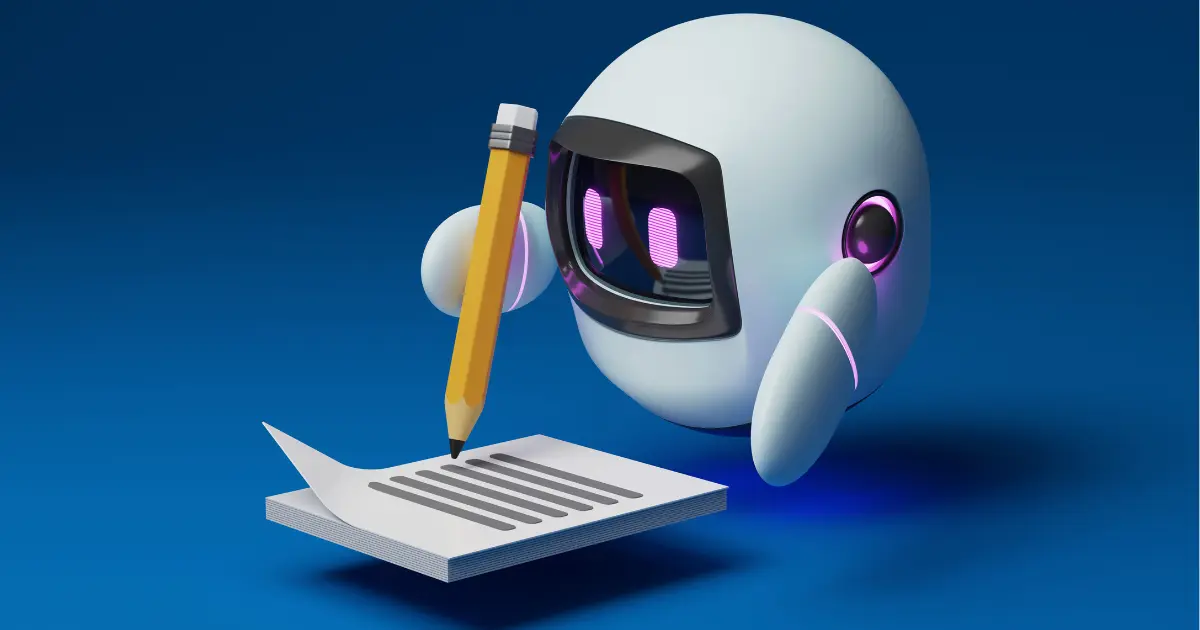Artificial Intelligence (AI) is transforming the field of education, bringing forth opportunities for learning and increased student engagement. By automating tasks, the AI enables educators to dedicate time to teaching and less time to administrative responsibilities.
AI can identify patterns in written content, allowing us to differentiate between text authored by humans and text generated by AI systems. This ability holds implications for academia in areas such as detecting plagiarism, facilitating peer review processes, and evaluating student assignments.
In this article, we’ll delve deeply into integrating AI in education, its role in task completion, and methods for discerning human-written text from AI-generated text.
Impact of AI in Education
The impact of AI in education is profound and multifaceted. On one hand, it enhances personalized learning by tailoring educational content to individual student’s needs. AI algorithms analyze a student’s performance and adapt the curriculum accordingly, focusing on areas where the student may struggle and presenting subjects that best suit their learning style.
In addition, AI can enhance accessibility in education. Features such as speech recognition, text-to-speech conversion, and language translation powered by AI help create an inclusive learning environment for students with diverse abilities and linguistic backgrounds.
Furthermore, AI-powered virtual assistants and chatbots are capable of providing round-the-clock educational support, answering student queries, and offering instant feedback, thereby facilitating a seamless learning experience.
However, while the benefits are significant, it’s important to consider potential challenges and ethical considerations. These include privacy concerns around data collection, the potential for algorithmic bias, and the need for a human touch in education. These considerations call for a thoughtful and responsible approach to the implementation of AI in the education sector.
See Also: ChatGPT Alternatives for Writing
AI in Task Automation
AI is revolutionizing task automation in the educational sector, offering immense potential to offload administrative burdens from educators. The deployment of AI in tasks such as schedule management, grading assignments, and maintaining student records reduces the time educators spend on paperwork, allowing them to focus more on teaching and student interaction. AI algorithms can assess student assignments, grade them based on pre-set standards, and provide constructive feedback.
Moreover, AI can automate the process of tracking student attendance and progress, thereby streamlining administrative tasks. In addition, predictive analytics, powered by AI, can help identify students at risk of falling behind, facilitating early intervention.
AI-driven automation, if implemented thoughtfully, can significantly enhance the efficiency of the education sector and allow educators to focus on their core responsibility – imparting knowledge.
However, it is critical to remember that AI should be utilized to aid educators rather than replace them. The human touch, empathy, and personal interaction that educators bring to the table cannot be replicated by AI.
AI in Content Creation
Artificial Intelligence is making significant strides in content creation, with AI-powered tools now capable of generating text, creating educational resources, and even producing research reports. These AI algorithms draw from vast existing content databases to create new, unique pieces of text. This has a multitude of applications in an educational context.
For instance, AI can generate quiz questions, create tutorial content, or produce reading summaries, thereby aiding in the learning process.
However, it’s important to note that while the text generated by AI can be of a high standard, it can lack the depth, context, and nuance that human-authored content can provide. Therefore, AI-generated content should ideally be used with, and not as a replacement for, human-created material.
Related: Pros and Cons of AI in Marketing (with Industry-Based Examples)
Differentiating between AI and Human Written Text
AI-generated text tends to exhibit specific patterns that can be identified with careful observation. One key characteristic is the issue of coherence over longer stretches of text.
While AI can generate grammatically correct sentences, it often struggles with maintaining thematic consistency across a larger body of work. Moreover, AI systems might produce text that seems oddly generic, lacks personal anecdotes or specific examples, and may overuse certain phrases or words.
On the other hand, human-written text often contains personal biases, cultural nuances, and emotions that are currently difficult for AI to emulate perfectly. Humans tend to write in a subjective manner, incorporating their feelings, personal experiences, and cultural background into their texts. This might be less visible in more formal or academic texts, but it’s quite evident in more casual or personal writing.
Given these characteristics, educators can use tools and techniques to differentiate AI from human-written text. AI detector tools that detect patterns in writing style, word usage, and thematic consistency can be employed. Moreover, asking for specific examples, personal insights, or emotional responses can also be methods to discern AI-generated text from human-authored content.
However, as AI technologies advance, the differentiation might become more challenging, stressing the importance of continuous research and adaptation in our approach to AI in education.
Implications for Academia
The integration of AI into the academic landscape holds significant implications. It offers the potential to enhance the efficiency of administrative tasks, such as grading and attendance tracking, while also contributing to personalized learning experiences.
However, with the advent of AI-generated text, academia must adapt its approach to written assignments and plagiarism detection. By leveraging AI detection tools and promoting the inclusion of personal insights and examples in student work, institutions can ensure the authenticity of submitted work.
In peer review processes, AI can facilitate by automating the initial screening stages. Nevertheless, the human touch remains irreplaceable, underlining the need for a balanced approach to AI implementation. As AI technologies continue to advance, so should the academic sector’s strategies for their utilization and management.
Also Read: Google Bard Alternatives
Conclusion
Artificial Intelligence has undeniably emerged as a transformative force in education, offering far-reaching potential in areas ranging from task automation to content creation.
However, it is critical to approach this potent tool with a well-rounded, balanced perspective, recognizing not just the benefits but also the challenges it poses.
As we continue to harness AI’s capabilities, it is incumbent upon us to ensure that ethical considerations are taken into account and that the indispensable human element in education is preserved.





